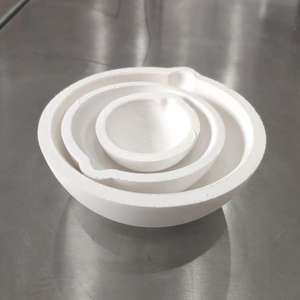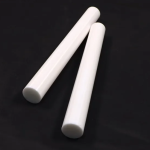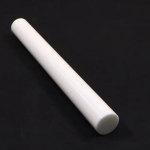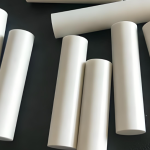Discover Premium Ceramic Products | Durability & Elegance United | Advanced Ceramics
PRODUCT PARAMETERS
Description
Overview of zirconia ceramic rods
Zirconium oxide rods, also known as zirconia rods, are cylindrical components made from zirconium dioxide (ZrO2), which is a white crystalline oxide of zirconium. Zirconium oxide exists in several phases, but the most common and useful form for engineering applications is the cubic or tetragonal phase stabilized with small amounts of yttria (Y2O3) or magnesia (MgO).
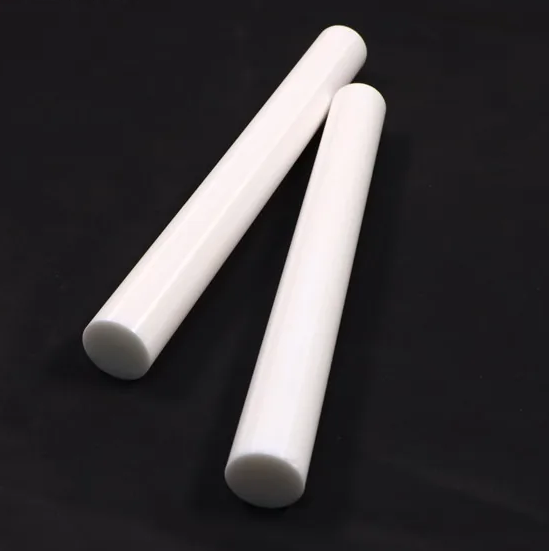
Features of zirconia ceramic rods
High Mechanical Strength and Hardness: Zirconia rods exhibit excellent mechanical properties, including high hardness and strength, which makes them resistant to deformation under pressure and capable of withstanding significant mechanical stress.
Toughness and Fracture Resistance: Through the stabilization process, zirconia can undergo phase transformation toughening, which increases its ability to resist crack propagation. This feature is particularly beneficial in applications where impact resistance is important.
Thermal Stability and High Melting Point: With a melting point of around 2700°C, zirconia rods can maintain their structural integrity at very high temperatures, making them ideal for use in high-temperature environments such as furnaces or engine components.
Low Thermal Conductivity: Zirconia has relatively low thermal conductivity compared to metals, which means it can act as an effective insulator in certain applications, reducing heat loss.
Chemical Inertness and Corrosion Resistance: Zirconia rods are chemically inert and highly resistant to corrosion by acids, bases, and molten metals, which extends their durability and service life in aggressive chemical environments.
Excellent Wear Resistance: The material’s hardness and toughness contribute to its superior wear resistance, making it suitable for use in bearings, cutting tools, and other parts subject to friction and abrasion.
Biocompatibility: Zirconia is bio-inert and does not cause adverse reactions within the human body, which allows it to be used in medical implants and dental applications.
Electrical Insulation: At room temperature, zirconia acts as an electrical insulator, which can be advantageous in electronic devices or when electrical isolation is required.
Oxygen Ion Conduction: When heated to elevated temperatures, stabilized zirconia becomes a good conductor of oxygen ions, which is why it is used in solid oxide fuel cells and oxygen sensors.
Dimensional Stability: Zirconia rods have minimal shrinkage during sintering and maintain their dimensions well under varying conditions, ensuring precise fit and function in precision applications.
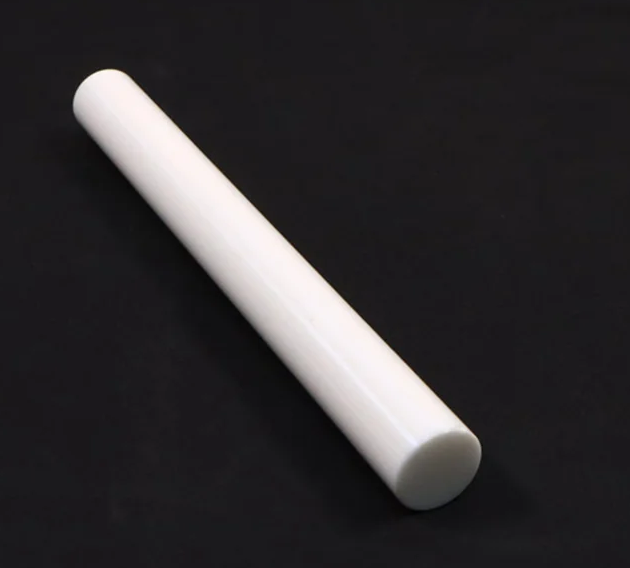
Specifications of zirconia ceramic rods
| Specification | Description |
| Material Composition | ZrO2 with stabilizers (e.g., Yttria, Magnesia) |
| Purity (%) | Typically 95% to 99.95%, depending on grade |
| Density (g/cm³) | Approximately 5.60 to 6.10 g/cm³ |
| Flexural Strength (MPa) | Can range from 800 to 1200 MPa at room temperature |
| Fracture Toughness (MPa·m^½) | Around 7 to 12 MPa·m^½ |
| Hardness (Vickers HV) | Approximately 1200 to 1400 HV |
| Thermal Conductivity (W/m·K) | Low, around 1.5 to 3.5 W/m·K at room temperature |
| Coefficient of Thermal Expansion (CTE) (10^-6/K) | ~10.5 at room temperature |
| Melting Point (°C) | Approximately 2700°C |
| Max Service Temperature (°C) | Up to 2200°C in oxidizing atmospheres |
| Chemical Resistance | Excellent resistance to acids, bases, and molten metals |
| Electrical Resistivity (Ω·cm) | High, >10^12 Ω·cm at room temperature |
| Diameter (mm) | Can range from 1 mm to 100 mm or more |
| Length (mm) | Can be custom-made but typically available in lengths up to several meters |
| Surface Finish (Ra µm) | May vary; often specified as <0.4 µm for precision applications |
| Tolerance (mm) | Usually ±0.1 mm for diameter, depending on size and application requirements |
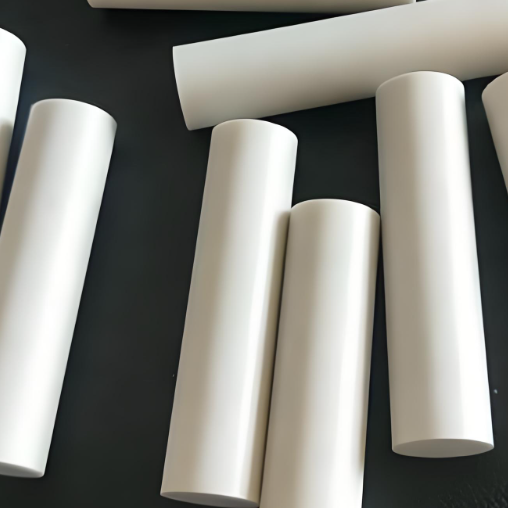
Zirconia ceramic rods
Manufacturing Methods of Zirconia ceramic rods
1.Powder Preparation
Raw Material Selection: High-purity zirconium dioxide powder is selected, often stabilized with additives like yttria (Y2O3), magnesia (MgO), calcium (CaO), or ceria (CeO2).
Mixing: The raw powders are mixed thoroughly to ensure homogeneity. This may involve wet mixing with organic binders or dispersants to improve flowability and sintering behaviour.
2. Shaping
Extrusion: A popular method for forming cylindrical shapes. The powder mixture is forced through a die under high pressure to create rod-shaped green bodies.
Isostatic Pressing: Both cold isostatic pressing (CIP) and hot isostatic pressing (HIP) can be used. CIP uses rubber moulds and fluid pressure to form the shape, while HIP also applies heat during the pressing process.
Injection Molding: Suitable for more complex shapes, this method involves injecting a heated mixture of ceramic powder and polymer binder into a mould.
Dry Pressing: For simple geometries, dry pressing can be used where the powder is compacted in a mould using mechanical pressure.
3. Drying
After shaping, the green bodies (unfired parts) are dried to remove any moisture or organic solvents used during mixing or shaping. This step is critical to prevent cracking during subsequent firing.
4. Sintering
Firing/Sintering: The dried green bodies are then fired at very high temperatures (typically between 1400°C and 1600°C) in a kiln or furnace. During this process, the particles fuse together, increasing the density and strength of the material. The stabilization additives help maintain the cubic or tetragonal phase of zirconia at these temperatures, which is important for its mechanical properties.
Controlled Atmosphere: Depending on the composition and required properties, sintering might occur in controlled atmospheres (such as air, oxygen, or inert gases) to avoid unwanted reactions.
5. Machining
Grinding and Polishing: After sintering, the rods may undergo machining to achieve precise dimensions and surface finishes. Diamond tools are commonly used due to the hardness of zirconia.
Surface Treatment: Additional treatments such as lapping or polishing can be applied to reach the desired surface finish.
6. Quality Control
Throughout the manufacturing process, quality control measures are taken to ensure that the rods meet specified standards for purity, density, strength, and other physical properties.
Applications of zirconia ceramic rods
1. Ceramics and Structural Components
Bearings: Zirconia’s hardness and wear resistance make it suitable for high-performance bearings in machinery.
Cutting Tools: Used in precision cutting tools due to their hardness and ability to maintain a sharp edge.
Wear Parts: Components like nozzles, valve seats, and pump parts benefit from zirconia’s excellent wear resistance.
2. Electronics and Sensors
Oxygen Sensors: Commonly used in automotive exhaust systems to monitor oxygen levels for efficient engine operation.
Substrates and Insulators: Zirconia’s electrical insulation properties at room temperature make it useful in electronic components.
Solid Oxide Fuel Cells (SOFCs): Acts as an electrolyte in SOFCs, conducting oxygen ions at high temperatures.
3. Medical and Dental Applications
Dental Implants: Zirconia’s biocompatibility and aesthetic appearance make it a popular material for dental crowns and implants.
Orthopedic Prostheses: Used in joint replacements such as hip and knee implants due to their strength and bio-inertness.
4. Laboratory and Scientific Equipment
Crucibles and Furnace Liners: The high melting point and chemical stability allow zirconia to be used in laboratory equipment exposed to extreme conditions.
Analytical Instruments: Components of analytical instruments that require materials resistant to high temperatures and corrosive chemicals.
5. Automotive Industry
Catalyst Supports: Zirconia can serve as a support material in catalytic converters, enhancing the efficiency of emission control systems.
Thermal Barriers: Used as coatings or components in engines to reduce heat transfer and improve fuel efficiency.
6. Chemical Processing
Corrosion-Resistant Components: Valves, piping, and other components that come into contact with aggressive chemicals can utilize zirconia for its superior corrosion resistance.
Reaction Vessels: Used in reactors where high temperatures and pressures are involved.
7. Optical Applications
Lenses and Windows: Due to its optical transparency in certain forms, zirconia can be used in specialized optical lenses and windows.
8. Nuclear Industry
Fuel Pellet Coatings: Zirconia is used as a coating on nuclear fuel pellets to enhance safety and performance.
9. Advanced Manufacturing
Additive Manufacturing: Zirconia is being explored for use in 3D printing processes to create complex geometries for industrial and medical applications.

Company Profile
Advanced Ceramics founded on October 17, 2014, is a high-tech enterprise committed to the research and development, production, processing, sales and technical services of ceramic relative materials and products.. Since its establishment in 2014, the company has been committed to providing customers with the best products and services, and has become a leader in the industry through continuous technological innovation and strict quality management.
Our products includes but not limited to Silicon carbide ceramic products, Boron Carbide Ceramic Products, Boron Nitride Ceramic Products, Silicon Carbide Ceramic Products, Silicon Nitride Ceramic Products, Zirconium Dioxide Ceramic Products, Quartz Products, etc. Please feel free to contact us.(nanotrun@yahoo.com)
Payment Methods
T/T, Western Union, Paypal, Credit Card etc.
Shipment Methods
By air, by sea, by express, as customers request.

FAQs of Zirconia ceramic rods
1. What are the key properties of zirconium oxide rods?
A: Key properties include high hardness, excellent wear resistance, high melting point (~2700°C), low thermal conductivity, chemical inertness, and biocompatibility.
2. Can zirconium oxide rods withstand high temperatures?
A: Yes, zirconium oxide rods can withstand very high temperatures, with a maximum service temperature of up to 2200°C in oxidizing atmospheres.
3. Can zirconium oxide rods be machined after sintering?
A: Yes, but due to their hardness, specialized tools like diamond-tipped cutters are required for machining post-sintering.
4. Can zirconium oxide rods be used in corrosive environments?
A: Yes, zirconium oxide rods exhibit excellent resistance to acids, bases, and molten metals, making them suitable for corrosive environments.
5. Can zirconium oxide rods be customized in terms of size and shape?
A: Yes, many manufacturers offer customization services for dimensions, tolerances, and surface finishes to meet specific application requirements.
REQUEST A QUOTE
RELATED PRODUCTS
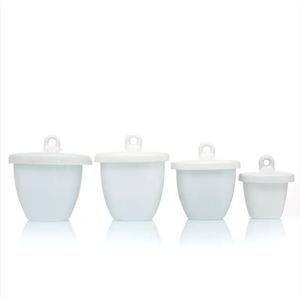
Whole 0.2mm 0.3mm 3mm 10mm 12mm G10 Zirconium Dioxide Ceramic Grinding Ball Zirconia Beads
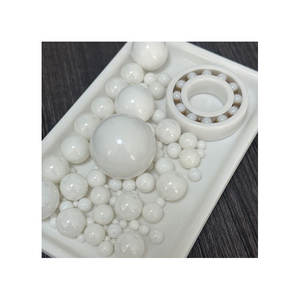
Zirconium Dioxide Zro2 Zirconia Powder Zirconium Oxide Ceramic Powder Per Ton
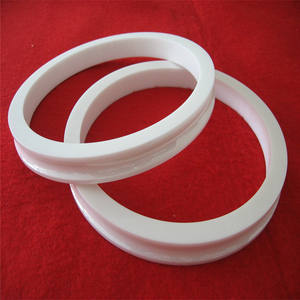
ZrO2 Zirconium Oxide Zirconia Ceramic Sheet
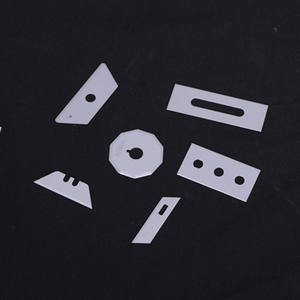
Zirconia Ceramic Pen Nib 0.12MM ZrO2 Zirconia Ceramic Pen Nib
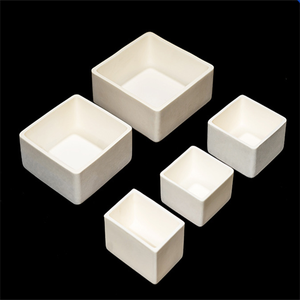
Zirconia Ceramic Zro2 Zirconium Oxide Electrical Ceramics
